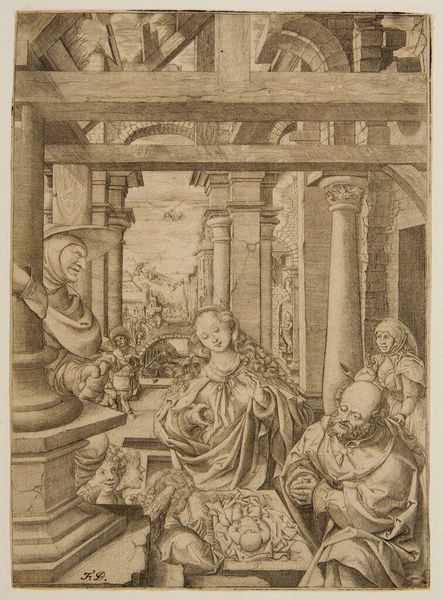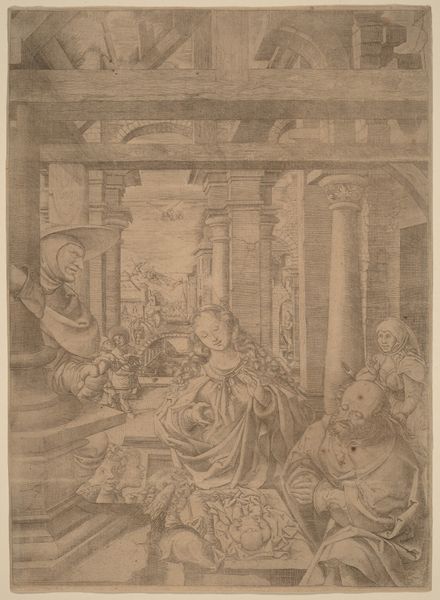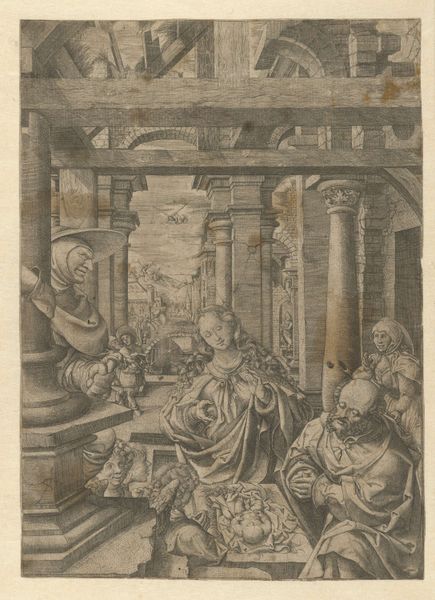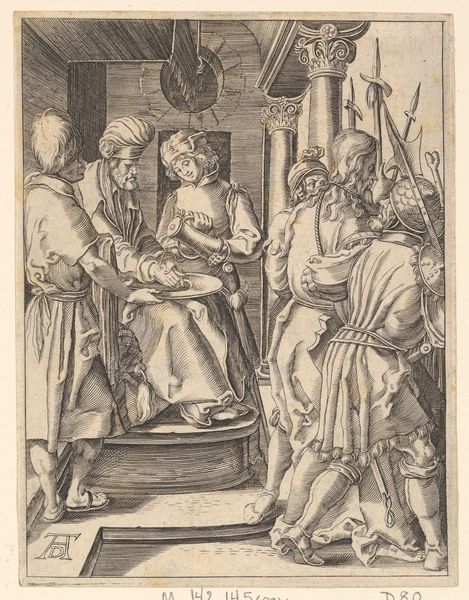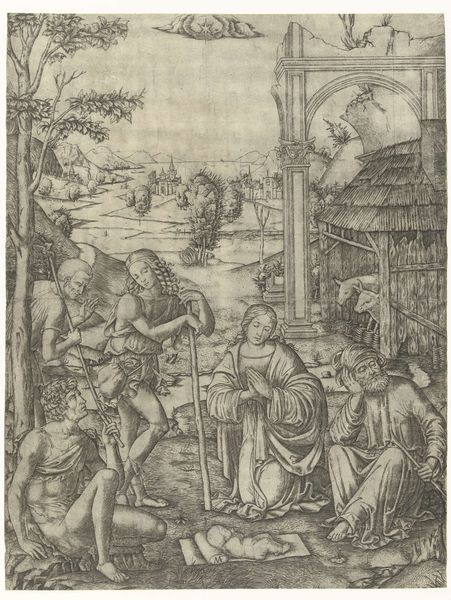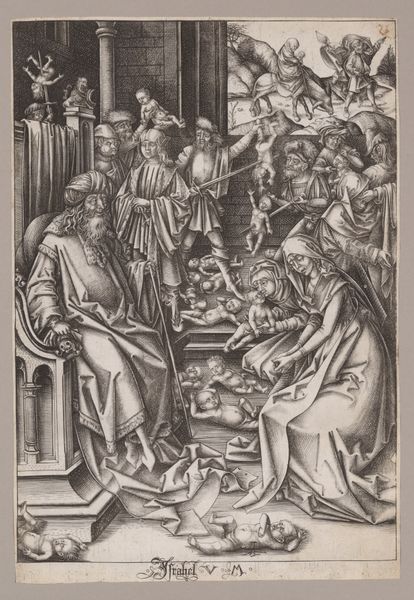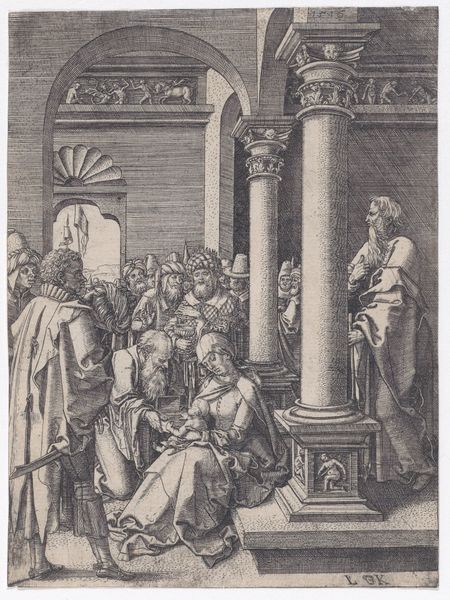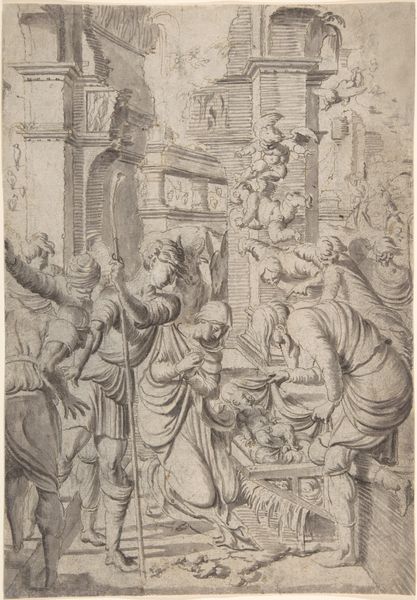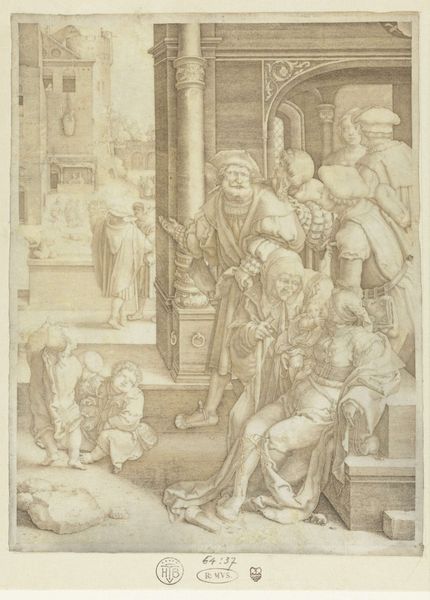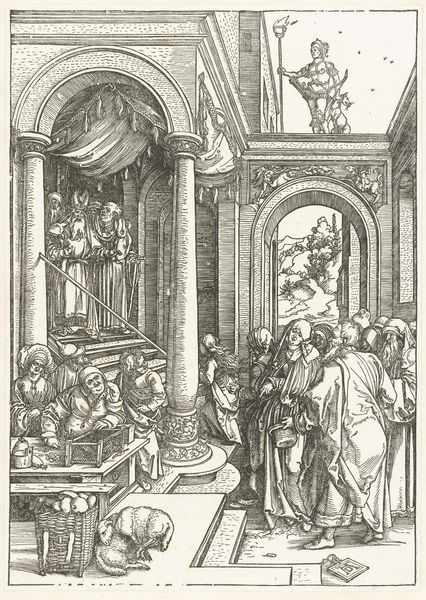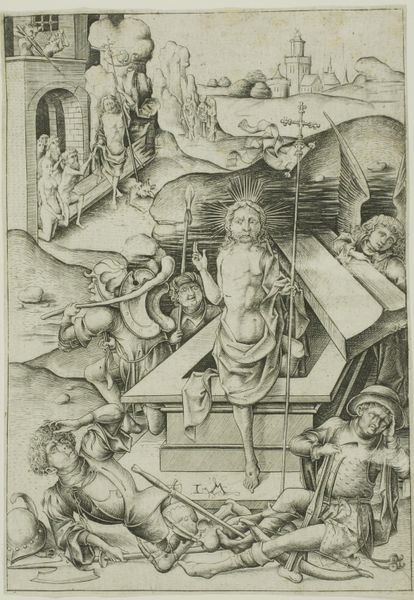
drawing, print, etching
#
drawing
#
narrative-art
# print
#
etching
#
landscape
#
figuration
#
northern-renaissance
Dimensions: Sheet: 9 1/2 × 6 3/4 in. (24.2 × 17.1 cm)
Copyright: Public Domain
Curator: The light and shade really draw the eye here, don't they? It’s a rather striking composition. Editor: It is. You're looking at "The Adoration of the Shepherds" created sometime between 1517 and 1530. The piece is attributed to Frans Crabbe van Espleghem, a Northern Renaissance artist, and rendered as an etching. Currently, it's part of the collection at the Metropolitan Museum of Art. Curator: Etching… that explains the incredibly fine lines and details. The labor involved must have been considerable. I wonder about the market for prints like this back then, and who it was produced for? Editor: Well, we know that printmaking played a significant role in disseminating religious imagery and humanist ideas during the Northern Renaissance. Its accessibility made it influential in shaping public perceptions. The Church also was a significant consumer of art to support their activities. Curator: Note how Crabbe sets the nativity within such an imposing architectural structure. It dominates the composition, dwarfing the figures. It feels like a deliberate commentary on the relationship between the sacred and the structural frameworks of power and patronage. Editor: I think that it is the contrast between the architecture and the subjects themselves that creates the most interesting tension in the piece, particularly within its historic setting. The setting serves as an interesting view into that patron context for artists during the period, with sacred artwork production often subsidized and incentivized. Curator: The figures also seem individualized. The expressions of the onlookers are particularly compelling – full of such keen scrutiny, with some appearing to almost grimace, set against the traditional serene central image of Mary. Editor: Exactly. These portrayals could reflect contemporary societal attitudes toward religion. The role art had as a record to reflect contemporary social tensions shouldn't be ignored. It's certainly a multifaceted statement that is both a representation of the church and the society that builds around it. Curator: Reflecting on both the image and our discussion, what is clear is how multifaceted this image can be viewed from multiple lenses, be they about technique and materiality or political tensions of the period. Editor: Agreed. It's a prime example of the visual conversations art generates across centuries, a constant negotiation between creator, context, and observer.
Comments
No comments
Be the first to comment and join the conversation on the ultimate creative platform.
